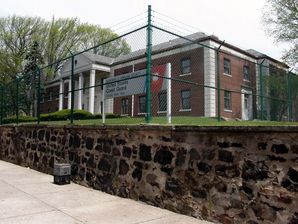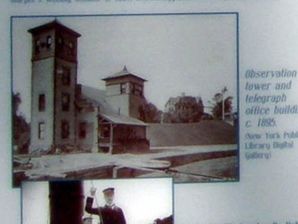Quarantine Boarding Station
Preventing Infectious Disease
For many years, this boarding station helped to prevent the spread of infectious diseases in the United States. From 1783 to 1971, officers working at this station boarded and inspected thousands of ships coming into New York Harbor each year. In the mid-late 1880’s, the majority of immigrants arriving to the United States entered through New York Harbor and were subject to inspection. Using a tugboat, a team of medical officers travelled into the harbor to inspect incoming vessels and their passengers. If the ships passed inspection, they were given a clean bill of health and could continue. If deadly and contagious diseases were present, the vessels were fumigated and the passengers quarantined until it was safe for them to land in New York. In the nineteenth and early twentieth century, Yellow fever, cholera, typhus, small pox, diphtheria, and measles were among the diseases requiring quarantine.
Quarantine!
The first quarantine law for New York Harbor was passed by the Colonial Legislature in 1758. It quarantined vessels at Bedloe’s Island (now Liberty island). In 1801, a quarantine station at Tomkinsville (sic), Staten Island, was established as the location for quarantine facilities. It was destroyed by arson in 1858. Earlier quarantine facilities failed because nobody wanted to live near hospitals full of highly contagious immigrants. For this reason, between 1870 and 1873, the State of New York built two islands for quarantine purposes: Hoffman Island for healthy passengers on quarantined ships, and Dix (Swinburn) Island for the sick passengers. The facilities on the island included dormitories, kitchens, dining rooms, a laundry, disinfecting and drying chambers, hospital wards, a crematory and a mortuary.
Rosebank
The Rosebank Boarding Station included building used as residences for the medical officers, a laundry, carpenter shop, boathouse, telegraph office and observation tower, laboratory, storerooms and a barn. The facility housed medical officers who would be available on short notice to examine passengers and inspect and fumigate vessels. Rosebank laboratory staff continuously tested rats collected from vessels to monitor for plague infestation. The State of New York sold the property to the United States in 1921, and the Public Health Service continued operations and improved efficiency by constructing new buildings and dormitories. The facility later became part of the Department of Health, Education and Welfare, and it was closed in 1971 along with the majority of the nation’s Quarantine stations as the result of a federal quarantine change that reduced disease inspection in favor of other forms of intervention.




